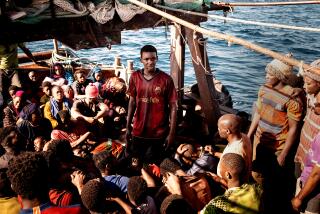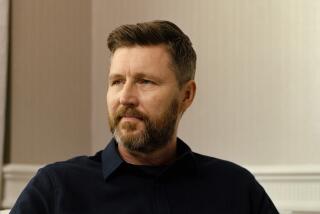‘Strangers on the Earth’ doc inspires as it captures musician’s sacred trek
The opposite of taking a walk on the wild side might be to hoof it across the 500 or so reflective, slow-going miles that form the Camino de Santiago, the renowned medieval Catholic pilgrimage route that spans northern Spain.
This scenic and sacred path, which typically starts in the French Pyrenees and moves west to the venerated Cathedral of Santiago de Compostela (reputedly the final resting place of St. James the Apostle), is warmly profiled in the often captivating, 2014-shot documentary “Strangers on the Earth.”
First-time feature director Tristan Cook follows an array of backpack-toting pilgrims as they walk the meandering Camino, sharing reactions and philosophies mostly via disembodied voice-overs rather than in more traditional on-camera interviews. (A better mix of both wouldn’t have hurt.)
Divided into seven chapters — one per leg of the journey — the movie nominally revolves around Cleveland Orchestra cellist Dane Johansen (also the film’s producer), whose goal is to record Bach’s Cello Suites in 36 churches en route. It doesn’t quite work out that way, though his haunting cello playing is captured in public concerts and proves key to the film’s soundtrack.
Johansen also gains major commitment points for schlepping across the Camino with that enormous cello strapped to his back.
Unfortunately, as with all the hikers seen here, we learn little if anything about Johansen’s personal background or history. It too often feels as if this talented musician and his co-pilgrims simply dropped onto the Camino from such far-flung spots as Australia, Germany, Brazil and Canada and landed in front of Cook’s cameras.
That’s a drawback for this beautifully shot movie, which relies primarily on travelogue-like footage of the area’s vast, verdant landscape as well as the Camino’s distinctly subjective spiritual quotient to engage the viewer. That may suffice for certain stretches, but it can leave us feeling disconnected from some of the deeper, more relatable human elements that drive these approximately 30-day tours. Certain practical issues get short shrift as well.
Although the Camino de Santiago has been heavily traveled since the Middle Ages (an estimated 300,000 people now make the trek each year), it gained a more recent boost in “bucket list” popularity after the release of writer-director Emilio Estevez’s 2010 feature drama “The Way.”
Nicely integrated clips of that well-reviewed movie, which starred Estevez’s father, Martin Sheen, as a doctor who walks the Camino to honor his late son, are seen here along with a hiker’s fannish admission that seeing the film roused her to take the trip. (The Camino was also the setting of Luis Buñuel’s surrealistic 1969 road movie “The Milky Way.”)
Following the pilgrims’ arrival at the route’s traditional end, the gorgeous, mainly Romanesque Cathedral of Santiago de Compostela (masked by renovation scaffolding at the time of shooting), the film then tracks a group of travelers on an extension trip to the mysterious Cape Finisterre.
Prior to the discovery of the Americas, this rocky peninsula, which juts out into the Atlantic, was once thought to be the edge of the known world. Today it serves as a kind of bonus to the Camino walk; a dazzling, remote spot where clothing is ritually burned in oceanfront bonfires and a famed, 1800s-era lighthouse illuminates the dangerous coast.
This stirringly captured sequence provides a memorable coda to a largely inspiring and transporting portrait.
-------------
‘Strangers on the Earth’
In English, Spanish and German with English subtitles
Not rated
Running time: 1 hour, 36 minutes
Playing: Laemmle Music Hall, Beverly Hills
See the most-read stories in Entertainment this hour »
Movie Trailers
More to Read
Only good movies
Get the Indie Focus newsletter, Mark Olsen's weekly guide to the world of cinema.
You may occasionally receive promotional content from the Los Angeles Times.






